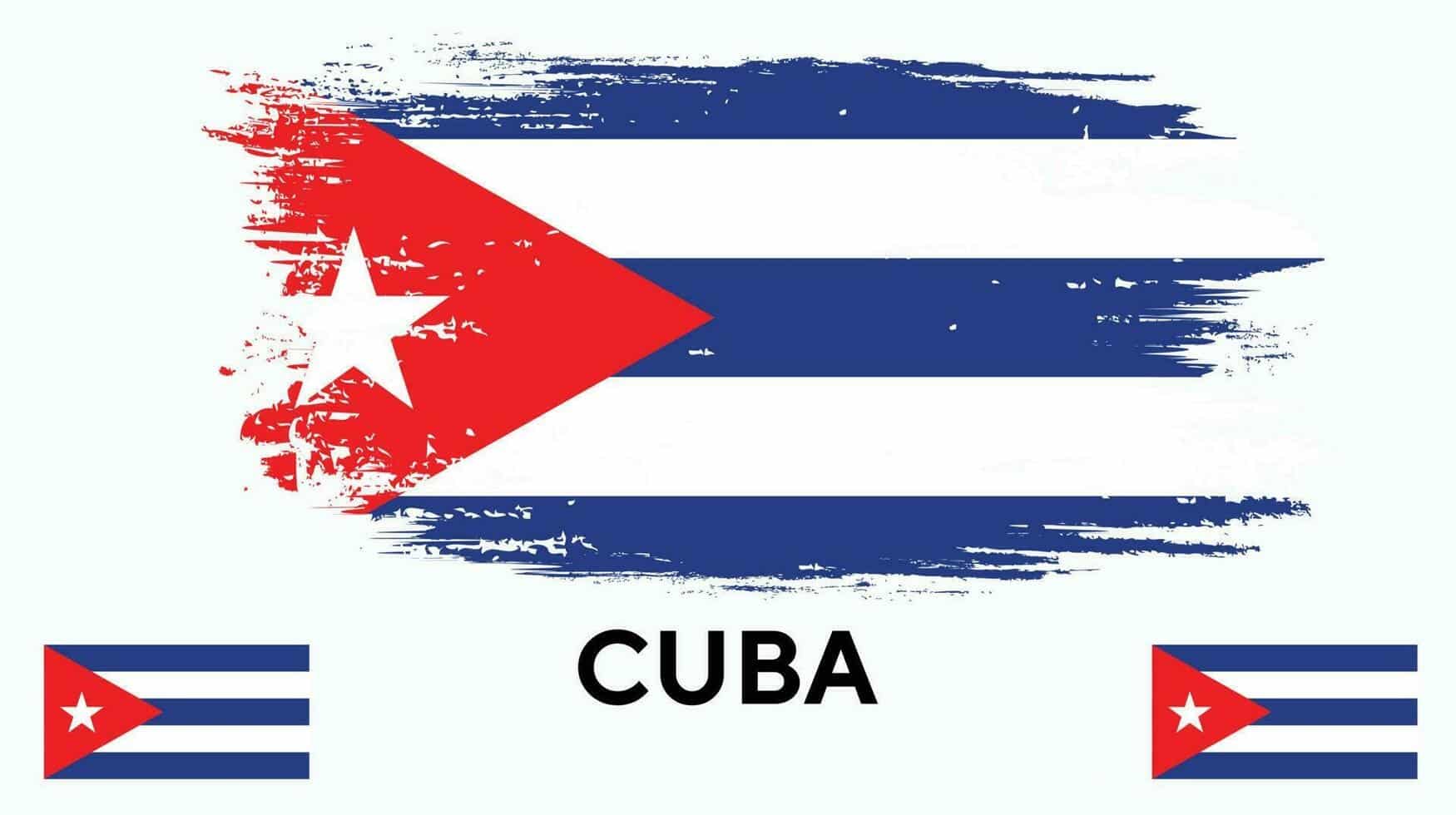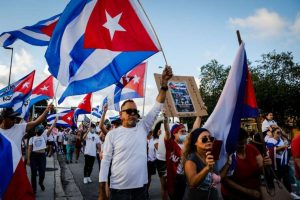Headlines
Cuba Population, Official Language And More.

The Cuban economy was mostly supported by Soviet subsidies. With the dissolution of the USSR in 1991 Cuba was plunged into a severe economic crisis known as the Special Period that ended in 2000 when Venezuela began providing Cuba with subsidized oil. The country has been politically and economically isolated by the United States since the Revolution but has gradually gained access to foreign commerce and travel as efforts to normalize diplomatic relations have progressed.

Cuba people with flag
The Population
Cuba has a population of approximately 11.3 million people. The country has a diverse population, with people of African, European, and mixed ancestry. The majority of Cubans are Roman Catholic, although there are also significant numbers of Protestants and followers of Afro-Cuban religions.
The Landmark
Cuba is known for its beautiful beaches, vibrant culture, and historic landmarks. One of the most famous landmarks in Cuba is the Havana Cathedral, which is located in the heart of Old Havana. The cathedral was built in the 18th century and is considered one of the finest examples of Baroque architecture in Latin America.
The Official Language
The official language of Cuba is Spanish. Spanish is spoken by nearly all Cubans and is the primary language used in government, education, and media.
The Culture
Cuba has a rich cultural heritage that reflects its diverse history and influences from Africa, Europe, and the Americas. Cuban music is world-renowned and includes genres such as salsa, son, and rumba. Cuban cuisine is also famous for its unique blend of Spanish, African, and Caribbean flavors.
The Economic Stability
Cuba’s economy has been heavily influenced by its political history. Following the Cuban Revolution in 1959, the country adopted a socialist economic model that was heavily reliant on Soviet subsidies. With the collapse of the Soviet Union in 1991, Cuba experienced a severe economic crisis known as the Special Period. In recent years, Cuba has made efforts to modernize its economy and attract foreign investment.
The GDP
Cuba’s nominal GDP was $100.023 billion in 2018. The country’s economy is classified as an upper-middle-income economy. Cuba’s economy has been heavily influenced by its political history. Following the Cuban Revolution in 1959, the country adopted a socialist economic model that was heavily reliant on Soviet subsidies. With the collapse of the Soviet Union in 1991, Cuba experienced a severe economic crisis known as the Special Period. In recent years, Cuba has made efforts to modernize its economy and attract foreign investment.
The Currency
The official currency of Cuba is the Cuban peso (CUP). It is subdivided into 100 cents. Until recently, there were two types of Cuban currency: the Cuban peso (CUP) and the Cuban convertible peso (CUC). However, in January 2021, Cuba adopted the Cuban peso as its sole currency, unifying the two currencies into one. Despite this, some stores still sell products like groceries, appliances, and other home goods in U.S. dollars and Euros.
The Food
Cuban cuisine is a blend of Spanish, African, and Caribbean flavors. Some of the most popular traditional dishes include:
Ropa Vieja: A dish made with shredded beef cooked in a flavorful sauce with onions, bell peppers, bay leaves, cumin, and other ingredients.
Arroz y Frijoles Negros: Rice and black beans are must-have accompaniments in Cuban cuisine.
Arroz Moros y Cristianos: A delightful combination of rice and beans.
Lechón Asado: Roast pork marinated with garlic and sour orange juice.
Tostones: Fried plantains that are crispy on the outside and soft on the inside.
These dishes are often paired with a salad or fried plantains.
Major Cities
The largest city in Cuba is Havana, which is also the capital city. Other major cities include Santiago de Cuba, Camagüey, Holguín, Santa Clara, and Guantánamo.
Major Airports, Sea Ports and Schools
Some of the major airports in Cuba include:
José Martí International Airport (HAV) in Havana
Frank País Airport (HOG) in Holguín
Ignacio Agramonte International Airport (CMW) in Camagüey
A list of all major airports in Cuba can be found at Airmundo.
Some of the major sea ports in Cuba include:
Port of Havana
Port of Santiago de Cuba
Port of Cienfuegos
A list of all major ports in Cuba can be found at Bansar China.
Cuba has a well-established education system with several universities and schools. Some of the major schools include:
University of Havana
University of Oriente
Central University “Marta Abreu” of Las Villas





